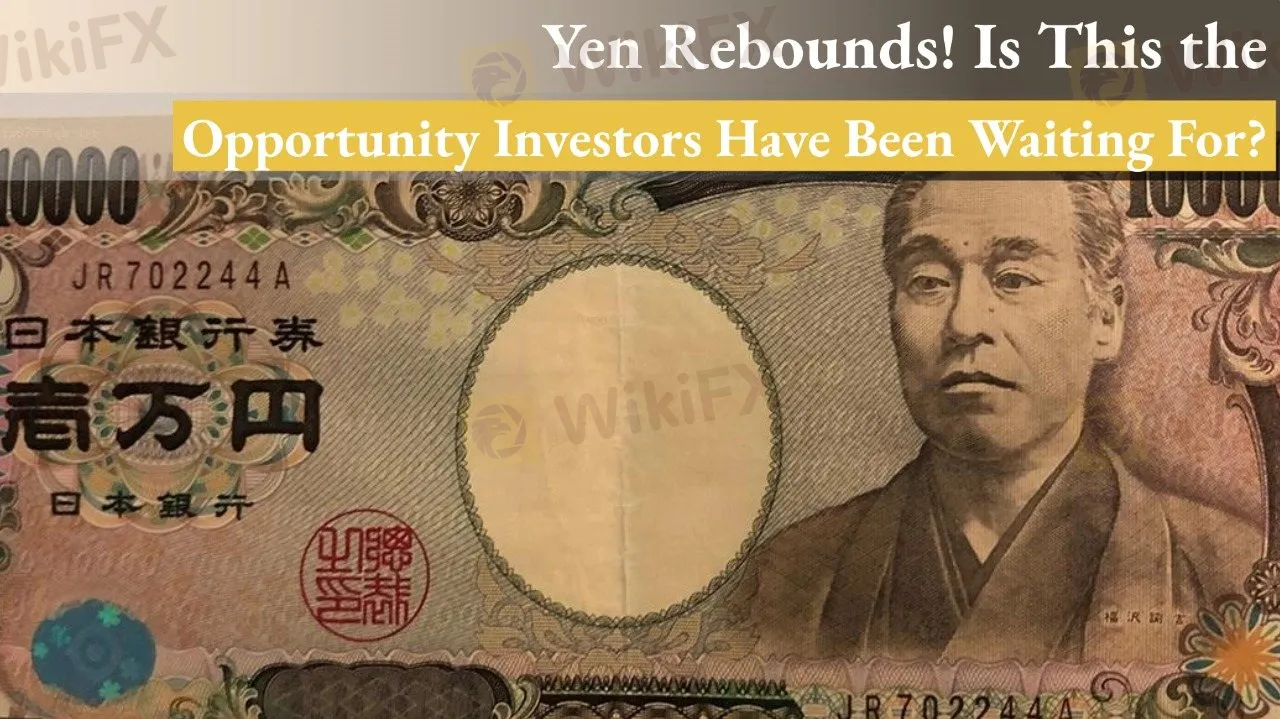简体中文
繁體中文
English
Pусский
日本語
ภาษาไทย
Tiếng Việt
Bahasa Indonesia
Español
हिन्दी
Filippiiniläinen
Français
Deutsch
Português
Türkçe
한국어
العربية
Yen Rebounds! Is This the Opportunity Investors Have Been Waiting For?
Abstract:The Japanese yen has staged a sharp rebound, breaking below key technical levels against the U.S. dollar. With diverging central bank policies, heightened risk sentiment, and a shifting macro backdrop, is this a real opportunity—or a trap?

Earlier this week, the Japanese yen surged against the U.S. dollar, marking a notable reversal from its mid-May lows. USD/JPY dropped significantly, piercing through the psychological support of 145.00 and testing the 145.40 region. Technically, the pair has slipped below its 100-hour moving average, suggesting a weaker short-term trend. Should the pair break below 145.00 decisively, further downside toward 144.30 or even 143.50 could follow. On the upside, 146.00 represents the first major resistance; a break above it could open room toward 146.70–147.45 and potentially 148.65.
Why the Rebound?
The key driver behind the yen‘s strength lies in the clear policy divergence between the Bank of Japan (BoJ) and the U.S. Federal Reserve (Fed). On the Japanese side, core inflation rose in May to the highest level in over two years—well above the BoJ’s 2% target for the third consecutive year—boosting expectations for another rate hike this year. Meanwhile, Japans June PMI also exceeded expectations, adding further credibility to calls for monetary tightening.
By contrast, several Fed officials—including Michelle Bowman, Austan Goolsbee, and Christopher Waller—have expressed dovish views, citing labor market risks and diminished inflation concerns. Markets are now pricing in at least two Fed rate cuts by year-end, with a third becoming increasingly likely.
Additional support for the yen came from news that Japans Economy Minister Ryosei Akazawa is planning a visit to the U.S. on June 26, potentially paving the way for a trade agreement before the July 9 tariff deadline. This, coupled with ongoing geopolitical tensions in the Middle East, has driven safe-haven flows toward the yen.
Uncertainty Remains High
Despite the yen‘s short-term strength, considerable uncertainties remain. The Fed’s next move will be data-dependent, and upcoming testimony by Fed Chair Jerome Powell will be critical. On the Japanese side, while the data supports tightening, the BoJ is known for its cautious approach. Premature market pricing could lead to sudden reversals.
The outcome of U.S.-Japan trade negotiations also remains a wildcard. If talks stall or fail, risk sentiment could sour. Technically, USD/JPYs behavior around the 145.00 support level will be key. A decisive break could trigger more selling, while stabilization could spark a rebound.
Challenges for Investors
Investors face a tough environment. While the yen appears to be strengthening, no concrete policy action has been taken yet. Should the Fed delay rate cuts or the BoJ pause tightening, the yen could quickly weaken again.
USD/JPY is currently in a corrective phase after a sharp uptrend, leading to choppy price action. Investors should closely watch the 145.00 support and 146.00 resistance zones to assess potential breakout or reversal patterns.
Position sizing and risk management are critical. Avoid overleveraging, stay nimble, and be prepared for abrupt swings driven by unexpected headlines—particularly around trade deals and central bank commentary.
Why Is the Yen So Sensitive to Policy Shifts?
The Japanese yen is uniquely reactive to global interest rate differentials and geopolitical shifts. Here's why:
Interest Rate Differentials: With Japan maintaining ultra-low rates, the yen is often used in carry trades. A narrowing U.S.-Japan yield gap (via Fed cuts or BoJ hikes) drives repatriation flows, lifting the yen.
Safe-Haven Demand: In times of risk aversion—due to geopolitical instability or global recession fears—the yen benefits as a traditional safe-haven asset.
Cautious Central Bank: The BoJ often lags in policy moves. Markets tend to pre-price rate hikes ahead of actual decisions, leading to volatility.
Technical Interplay: When fundamentals are unclear, technical breakouts often dictate short-term trends. Current price levels near support and resistance create key inflection points.
Export-Driven Economy: Japans economic structure means the yen reacts swiftly to trade, inflation, and global supply chain factors. Events like tariff talks or import cost spikes amplify price movements.
The yens rebound has been driven by a combination of weaker U.S. data, dovish Fed commentary, and stronger Japanese fundamentals. Yet, without confirmed policy shifts, this rally remains fragile.
If central bank divergence widens and geopolitical tensions linger, the yen could continue to gain. But if the Fed turns hawkish again or the BoJ stays cautious, the upside may be limited.
Investors should avoid premature conclusions. Monitor inflation, rate guidance, and trade updates. In the meantime, stay agile, manage risk carefully, and don‘t underestimate the yen’s sensitivity to policy tone and global events.

Disclaimer:
The views in this article only represent the author's personal views, and do not constitute investment advice on this platform. This platform does not guarantee the accuracy, completeness and timeliness of the information in the article, and will not be liable for any loss caused by the use of or reliance on the information in the article.
Read more

5 Cons of DB Investing Broker You Must Know
It's always advisable to read online review articles about forex brokers you are thinking to Invest your money with. The forex market has become increasingly unsafe due to the rise of fraudulent brokers. Review articles help you spot scam brokers and protect your money. Read this important article about DB Investing to stay fraud alert.

Scam Alert: Cloned Broker Scams on the Rise
Reputed authorities like the FCA have issued warnings against brokers who act genuine but are actually fake brokers. They copy details such as logos, names, branding, and sometimes even employee appearances to trick investors and steal money from them.

Fraud Alert: Don’t Trust These Firms, SC Malaysia Warns
Investors, Pay Attention! This is a serious warning from the Securities Commission Malaysia against 5 scam brokers operating in the forex market without a legal license. Here is the list of 5 fake brokers you must avoid.

Ultima Markets enters the UK and gains the FCA license
Ultima Markets has secured authorization from the FCA to offer CFDs to retail clients in the United Kingdom, marking its entry into one of the world’s most heavily regulated and competitive markets. According to the FCA register, the trading name “Ultima Markets” was approved on 21 July 2025.
WikiFX Broker
Latest News
What Is Forex Currency Trading? Explained Simply
LSEG Announces £1 Billion Share Buyback Program
Ultima Markets enters the UK and gains the FCA license
SEC Lawsuit Targets Real Estate Fraud Scheme by Joseph Nantomah
A Beginner’s Guide to Trading Forex During News Releases
Forex Hedging Strategies - Calming You Amid Market Chaos
ASIC Regulated Forex Brokers: Why Licensing Still Matters in 2025
Key Events This Week: ISM, Trade Balance And More Earnings
Think Uncle Sam Owes $37 Trillion? It's Far Worse Than That
SkyLine Judge Community: Appreciation Dinner Successfully Held in Malaysia
Currency Calculator


